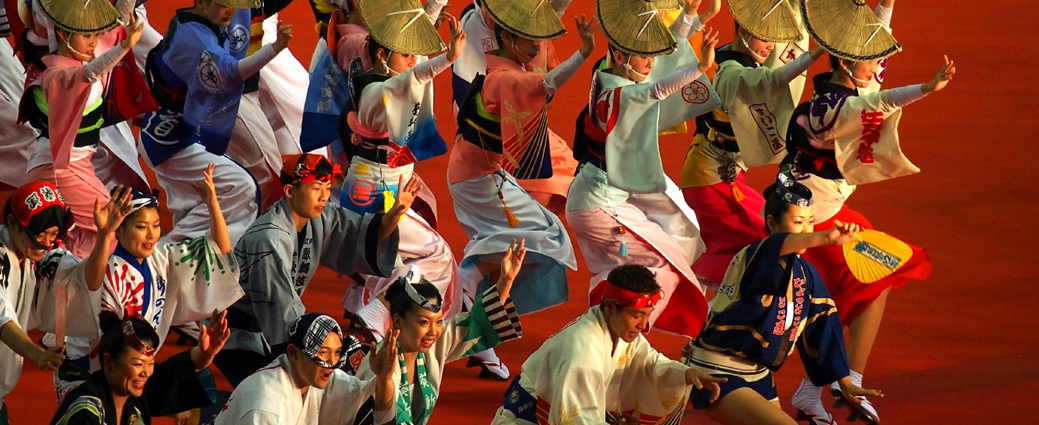Awa Odori Festival
Category: Festivals Tags: dance, festivals, obon, shikoku, summer
The Awa Dance (Awa Odori) is Tokushima’s largest annual event and boasts a history of over 400 years. The festival is well established in various areas even outside the prefecture, and Awa Dance troupes are regularly invited to events outside of Japan, placing it alongside the Rio Carnivale as one of the largest dance events in the world.
Three theories exist regarding the origins of the Awa Dance.One is that the dance is a local version of the Bon Festival dance performed in summer throughout Japan. Another is that it grew from celebrations on the completion of Tokushima Castle held by Masayasu Sogo in 1587, when Lord Hachisuka Iemasa provided rice wine to the townspeople gathered below and the crowd began dancing with abandon.The third theory is connected with the organized dancing troupes known as “Ren” that are a central feature of the Awa Dance, said to show the influence of furyu, an ancient form of dramatic dance that was a predecessor of Noh theatre.There is record in Miyoshi district records from 1663 of a furyu dance at Shozui Castle in 1578, and this performance is thought to be the origin of the Awa Dance in this theory. Promotion of the festival as a tourist event began in the 1920s, the same time when the name “Awa Odori” was adopted.
Today the dance is held in many locations throughout the prefecture as the main event of summer, in association with the traditional Bon Festival. By far the most popular area is in Tokushima City where the dance draws some 1.3 million visitors over the period of August 12 to 15, bringing the city center alive with excitement. From 6:00pm to 10:30pm every night of the dance, all of downtown Tokushima becomes a giant dancing stage. Main performances are held in parks and along the main streets at seven dance stages, four plazas, one ‘dance road’ and three large intersections. The Awa Dance is also held in Naruto, Miyoshi, Yoshinogawa, Tsurugi-cho and many other cities and towns throughout the prefecture. All of Tokushima catches the summer fever in preparation for the festival.
Contact us
Tel: 01865 841443
Fax: 01865 841445
Into Japan Specialist Tours
The Dovecote, Manor Farm, Ball Lane, Tackley, OX53AG


